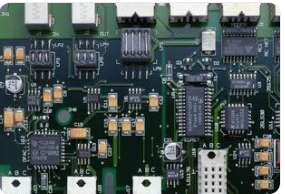Multi-layer circuit boards are generally used in high-speed PCB design. Multi-layer circuit boards are actually formed by laminating and bonding several etched single-sided or double-sided boards. Multi-layer circuit boards are compared with single and double-layer circuit boards., There are many advantages, especially in small-volume electronic products, let's share the advantages of multi-layer circuit boards together.
1. Multilayer circuit boards have high assembly density and small size. As electronic products become smaller and smaller, higher requirements are placed on the electrical performance of PCBs, and the demand for multilayer circuit boards is also increasing.
2. The use of multi-layer circuit boards is convenient for wiring, the wiring length is greatly shortened, and the wiring between electronic components is shortened, which also improves the speed of signal transmission.

3. For high-frequency circuits, after adding the ground layer, the signal line will form a constant low impedance to the ground, the circuit impedance is greatly reduced, and the shielding effect is better.
4. For electronic products with high heat dissipation function requirements, multilayer PCBs can be provided with a metal core heat dissipation layer, which is convenient to meet the needs of special functions such as shielding and heat dissipation.
In terms of performance, multi-layer circuit boards are better than single and double panels, but the higher the number of layers, the greater the production cost, the relatively long processing time, and the more complicated quality inspection. However, under the cost comparison of the same area, although the cost of multi-layer circuit boards is higher than that of single and double layers, when the noise reduction factor is taken into consideration, the cost difference between the two is not so obvious. With the advancement of technology, there are now PCB boards with more than 100 layers are used in precision aerospace instruments and medical equipment.
The most common multi-layer PCB is four- or six-layer boards, and the most common ones in daily life are computers that we are familiar with. The difference between a four-layer board and a six-layer board is the middle layer. There are two more internal signal layers between the ground layer and the power layer. The six-layer board is thicker than the four-layer board. Single and double-layer boards are easy to distinguish and can be distinguished with the naked eye. Hold the board and look at the light. Except for the wiring on both sides, the rest is transparent. But for the four-layer board and the six-layer board, if there is no corresponding mark on the board, it is not so easy to make a simple distinction.
Generally speaking, multi-layer circuit boards have been widely used in the manufacturing of electronic products due to their design flexibility, economic superiority, stable electrical performance and reliability.
Finally, talk about the layout of the circuit board. First, consider the size of the PCB. When the PCB size is too large, the system's anti-interference ability will decrease and the cost will increase with the increase of the traces, and the too small size will easily cause heat dissipation and mutual interference problems. Second, determine the location of special components (such as clock components) (the clock traces are best not to be grounded and not to walk up and down the key signal lines to avoid interference). Third, layout the PCB as a whole according to circuit functions. In the component layout, the related components should be as close as possible, so that a better anti-interference effect can be obtained.